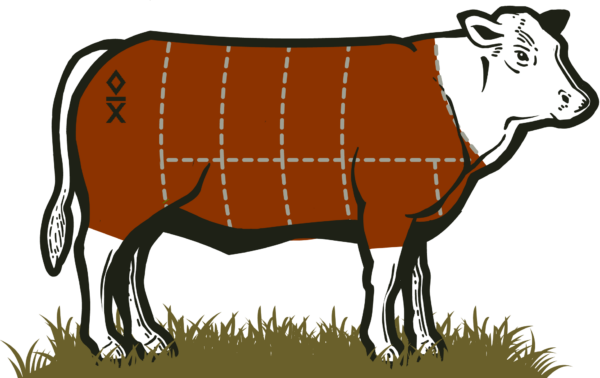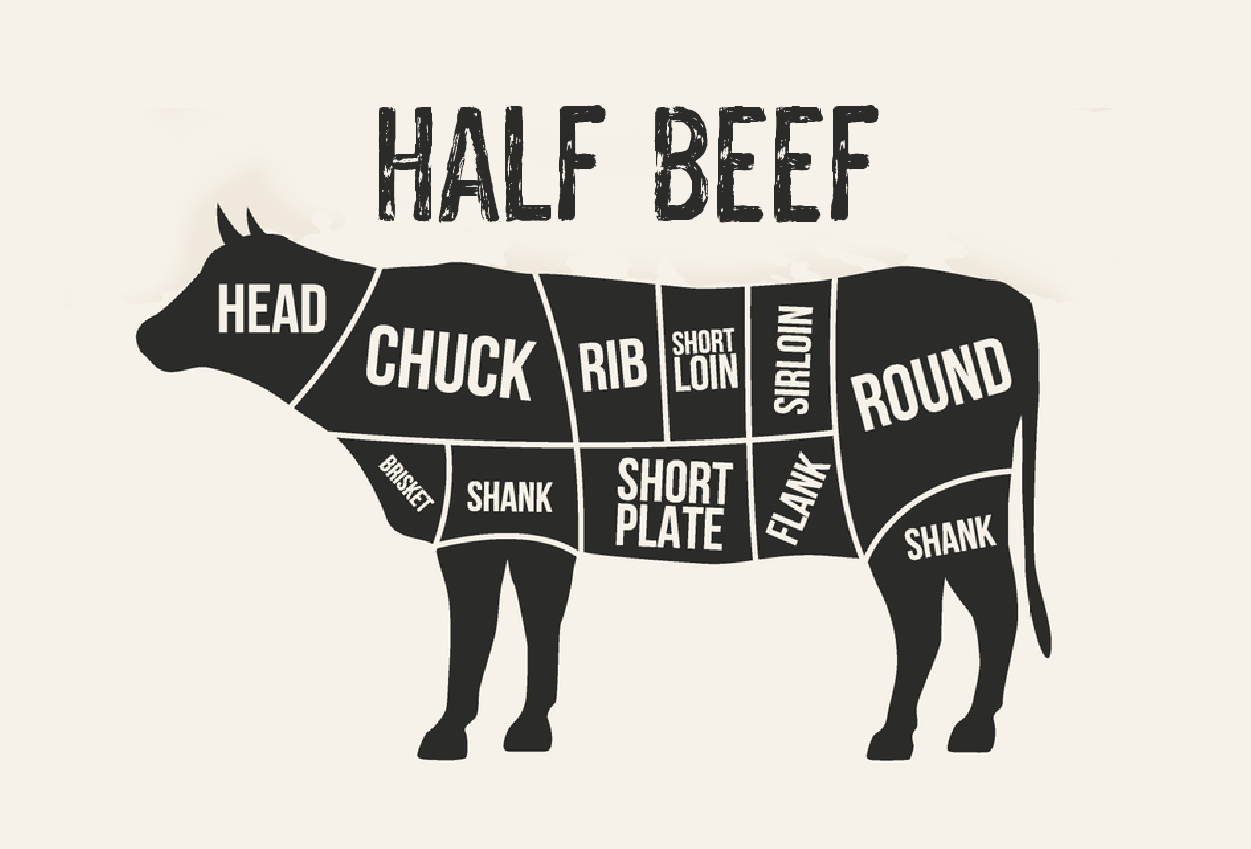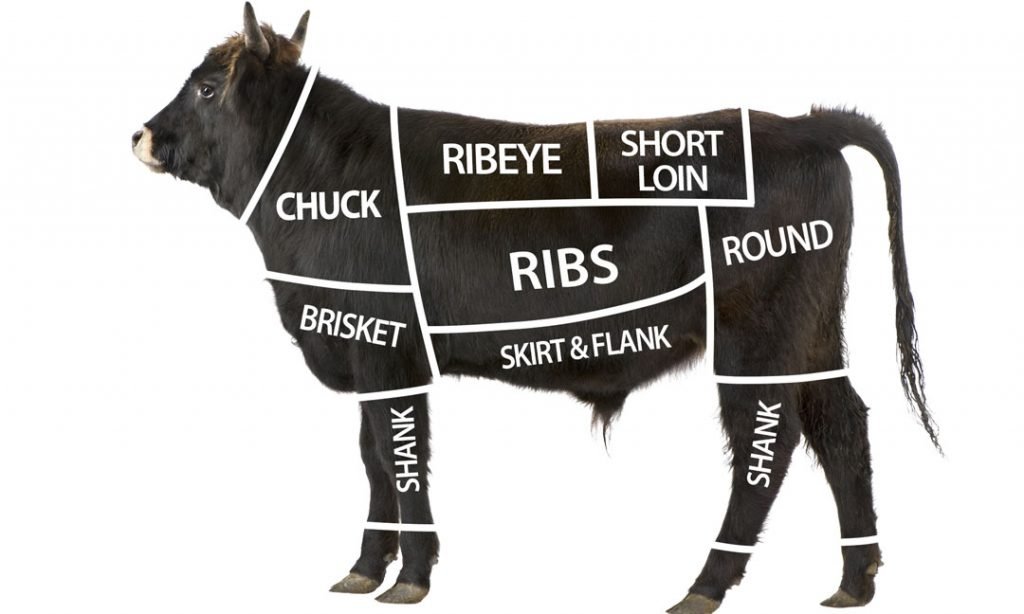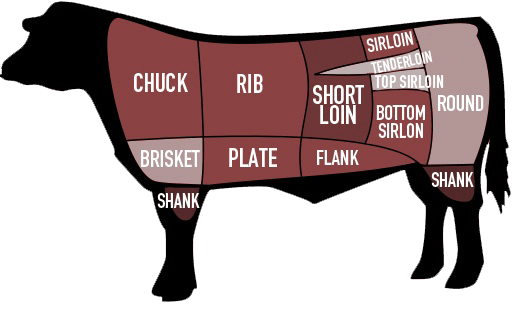Buying half a cow is quite economical and sustainable to make high-quality, locally sourced beef for masses. However, understanding the costs and logistics could be very important when making the decision. So, here’s a very detailed breakdown of what costs to consider, factors to take into account, and some tips for buying half a cow in Texas.
1. Buying Half a Cow Basics
When you buy half a cow, that really is purchasing some impressive amounts of beef-mostly cuts: steaks, roasts, ground beef, but you get much more. This would be the best option for families or individuals who eat beef regularly and have ample space to store in a freezer. Buying beef this way often allows you to pay a lower price per pound compared to retail prices, though there are many variables that determine the final cost.
2. Average Price of Half Cow in Texas
Typically, half a cow in Texas would cost approximately $1,200 to $1,600. The cost would depend on several factors, like how the farm is priced, the weight of the cow, and processing fees. This cost applies to the animal itself and the cost of slaughtering and processing. On the other hand, prices may be higher because of regional demand, the reputation of the farm, and whether it was raised on grass or grain-finished.

3. Cost Per Pound by Breakdown
Usually, buying beef in bulk costs you to pay for the “hanging weight” or “carcass weight” of the cow. That is the weight of the animal after slaughtering and cleaning but before the cuts and packaging of the meat. In Texas, the cost per pound of hanging weight runs from $4.00 to $6.00. After it’s been processed and trimmed, you can look forward to receiving from 60 to 65 percent of the hanging weight in packaged meat, so you have to factor this loss into your pricing.
4. Components of Half of Cow Price
There are a few factors which may come into play in the price for half a cow purchase:
Cow’s Diet: Grass fed cattle cost more than grain finished because longer feedstuffs cycle takes place, plus there is a price tag attached to grass-fed beef.
Breed and Quality: Some breeds, for instance, Angus, have characteristics of good marbling, tenderness, therefore, more costly.
Farm Reputation: The farm with a good reputation in terms of animal humane conditions and the quality of the meat that they produce could also charge more on their cows.
Processing Fees: processing and butchers differ in fees; these can be higher or lesser depending on the one you use, which can ultimately affect the final price.
5. Understanding Processing and Butcher Fees
Most likely, processing fees eat a larger percentage out of the total cost of purchasing half a cow. Normally, these processing fees in Texas often run as high as the following range: slaughter fee at a cost ranging from $75 to $150 and per-pound processing fee estimated at around $0.50 to $1.00 for each pound of hanging weight. Butcher fee is what describes the costs for cutting, packaging, and freezing the meat. One would need to ask for a breakdown of the costs from your processor to know what applies.

6. How Much Meat Will You Get?
Your overall number of usable pounds normally fluctuates between 200-250 pounds, depending on how much weight the animal had at the beginning and what cuts you order. This is a very rough estimate:
Ground Beef: 60-80 pounds
Steaks (Ribeye, Sirloin, T-bone, etc.): 30-40 pounds
Roasts and Ribs: 50-60 pounds
Miscellaneous Cuts (Stew Meat, Brisket, etc.): 20-30 pounds
The number of each cut will depend on your desire and the butcher’s recommendations.
7. Other Fees
In addition to the price of the cow and the processing fees, there may be additional fees such as:
Delivery or Pick-Up Fees: Some farms or processors will charge you for delivery, or you will need to pay for gas if you go to pick up your meat.
Freezer Space: If space in your freezers isn’t available, you’ll need to purchase a freezer of suitable size, which can range from $200 to $500.
Bagging Preferences: If you like vacuum sealed, you will pay extra for this, as it keeps the meat fresher for longer than the regular wrapping method.
8. Is Buying Half a Cow Worth It?
Buying half a cow is actually an economical purchase compared to a kilogram weighing at which retail cuts cost a pound of bulk-purchased beef. In general, for high-quality beef, the price for half a cow comes out to be around $6 to $8 per pound while the premium cuts cost as much as $10 or more a pound in supermarkets. Although it’s expensive in terms of upfront costs, buying half a cow is a considerable savings for frequent consumers.
How to Find a Trusted Farm in Texas Finding a reputable farm is the first step toward securing safe and healthy beef. Recommendations should start with any farms in your area that practice environmental sustainability and raise their animals humanely. Some Texas farms sell directly to consumers, so do a little research on farms in your immediate area and visit them if you have the opportunity. Here is a general guideline:
Read Reviews: There are online reviews by previous customers to give you an idea of how much reputation the farm has.
Visit the Farm: Some farms have their places open for you to visit and maybe see live animals being raised.
Ask About Feeding Practices: Grass-fed, organic, or hormone-free options usually affect quality and cost.
Check Certifications: Farms that have certifications, like Animal Welfare Approved, can give you peace of mind on how the animals are treated and the quality of your products.

10. Getting the Best Value from What You Paid For
To get the best value from your purchase, consider the following suggestions:
You can specify cuts of the processor’s choice that you might prefer, so be sure to ask for preferences based on cooking preference and family size when working with a processor.
Organize your freezer: This will help use every corner effectively and minimize waste to even more value from what you paid for.
Explore Recipes: Half a cow is always accompanied by the more obscure cuts: stew meat, soup bones, etc. It is the perfect moment to make some new recipes and broaden your gastronomical spectrum.
Plan for Long-Term Storage: Beef can be kept in the deep freezer up to one year without any decrease in quality. You will savor the meat in little incremental doses spread over time.
Buying a half of a cow in Texas proves to be a very convenient and also somewhat affordable way to eat great, fresh beef sourced from your locality while ensuring that you buy only sustainably farmed produce. Armed with proper planning, knowledge of costs, and a basic understanding of farms, you will be able to make the right decision that meets your budget and what you want in meat. When you order directly from farms, it gives you more control over the quality of meat and opens opportunities for working directly with suppliers in your locality and developing links that help bring about community as well as sustainability.



